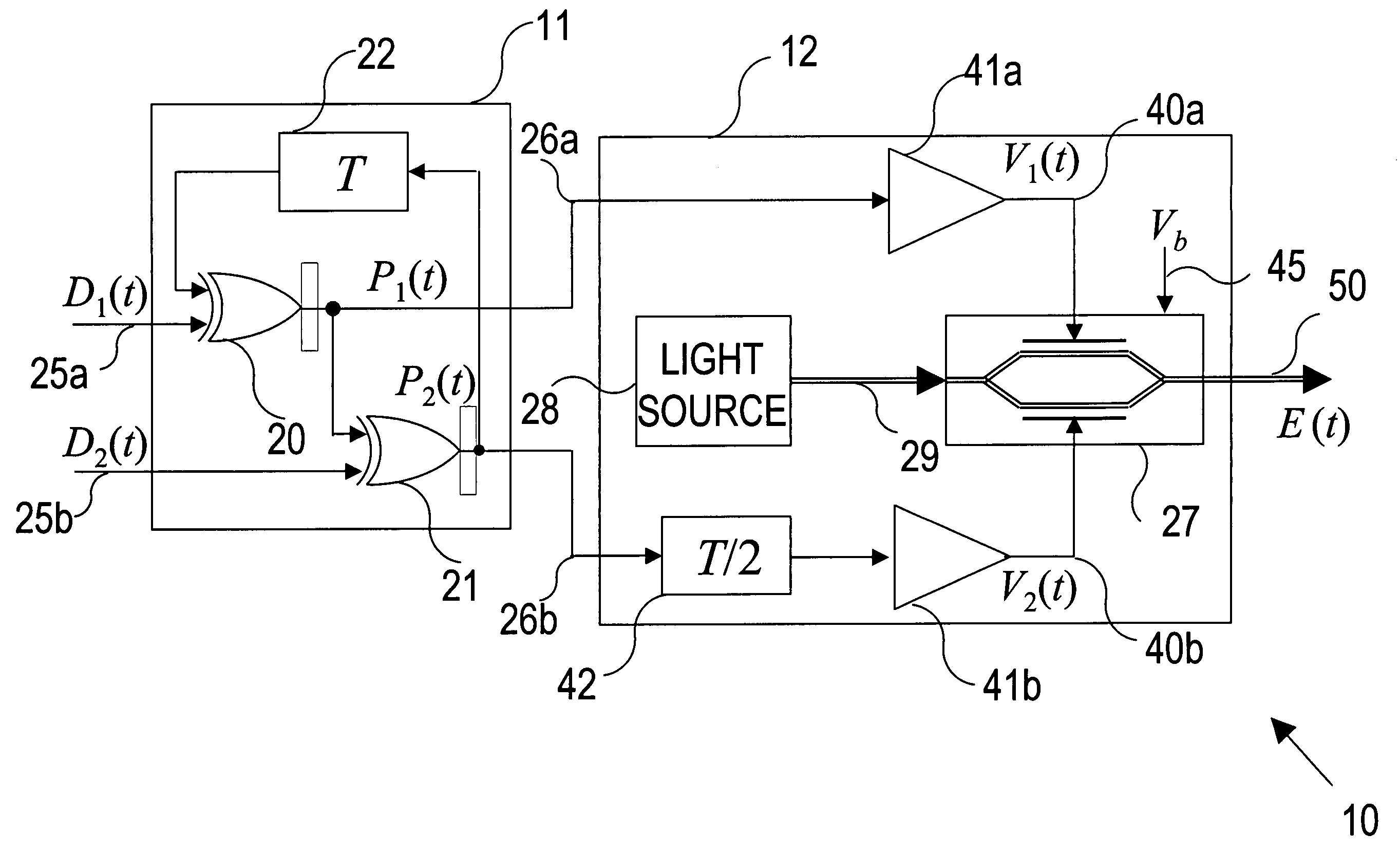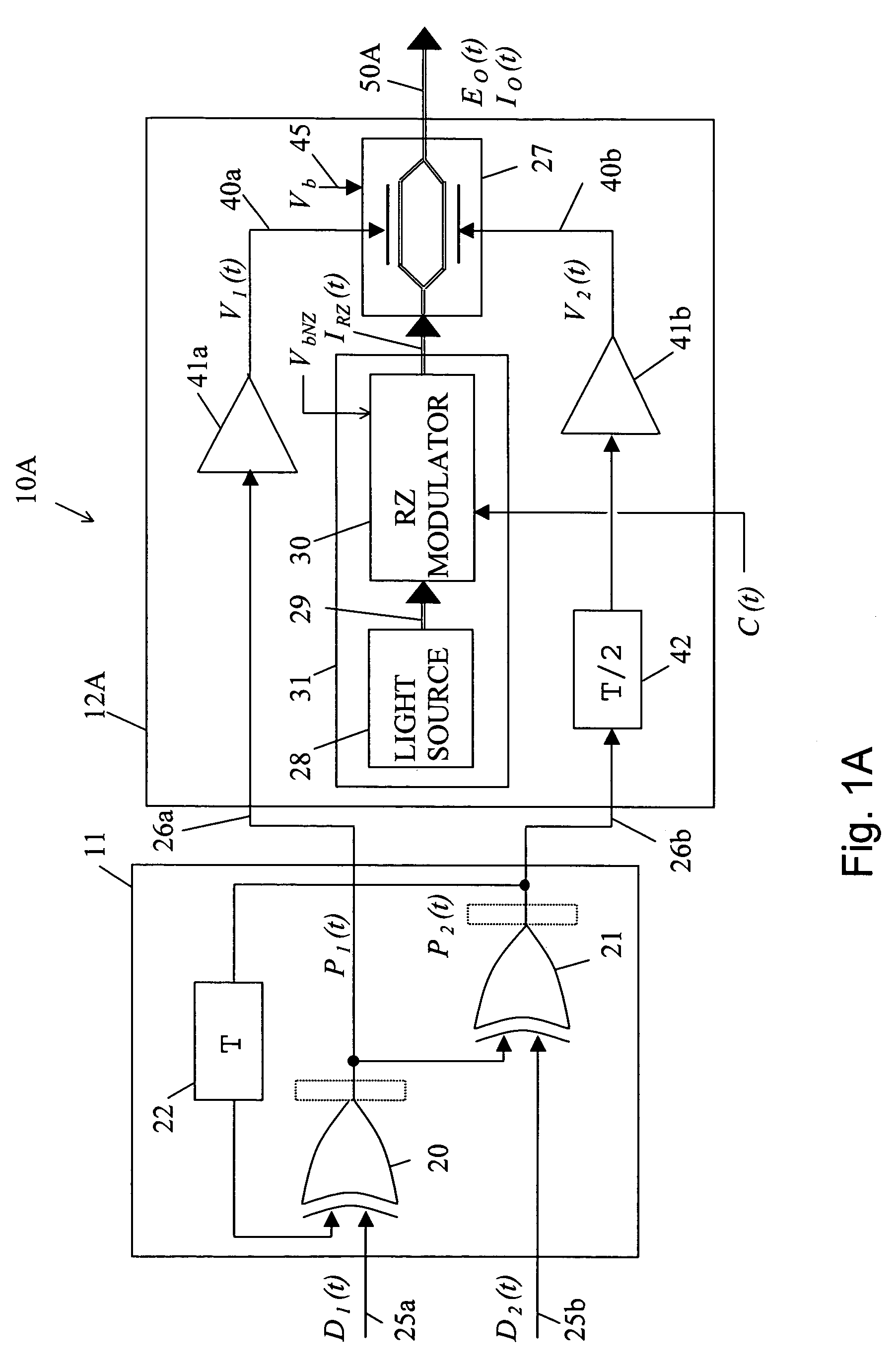Half rate precoded data RZ transmitter
a pre-coded data and transmitter technology, applied in electromagnetic transmission, electrical equipment, transmission, etc., can solve problems such as undesirable frequency chirp, and achieve the effects of preventing frequency chirp spreading, minimizing the spreading effect of frequency chirp, and little or no energy spread
- Summary
- Abstract
- Description
- Claims
- Application Information
AI Technical Summary
Benefits of technology
Problems solved by technology
Method used
Image
Examples
Embodiment Construction
[0038]FIG. 1 shows a block diagram of a duobinary transmitter 10 of the present invention having a precoder 11 and a multiplex modulator 12. The precoder 11 uses first and second exclusive-OR gates 20 and 21, respectively, and a one-symbol delay component 22 for receiving first and second binary half-rate input data streams D1 (t), denoted by 25a, and D2(t), denoted by 25b, respectively, and computing first and second cumulative cross parity streams P1(t), denoted by 26a, and P2(t), denoted by 26b, respectively. The first and second data streams D1(t) 25a and D2(t) 25b taken together carry the full-rate data that is to be transmitted.
[0039]The first exclusive-OR gate 20 provides the first cumulative cross parity stream 26a P1(t) equal to P2(t−T)+D1(t)mod 2, and the second exclusive-OR gate 21 provides the second cumulative cross parity stream 26b P2(t) equal to P1(t)+D2(t)mod 2, where the T is a half-rate input symbol time corresponding to the symbols in the half-rate input data-str...
PUM
 Login to View More
Login to View More Abstract
Description
Claims
Application Information
 Login to View More
Login to View More - R&D
- Intellectual Property
- Life Sciences
- Materials
- Tech Scout
- Unparalleled Data Quality
- Higher Quality Content
- 60% Fewer Hallucinations
Browse by: Latest US Patents, China's latest patents, Technical Efficacy Thesaurus, Application Domain, Technology Topic, Popular Technical Reports.
© 2025 PatSnap. All rights reserved.Legal|Privacy policy|Modern Slavery Act Transparency Statement|Sitemap|About US| Contact US: help@patsnap.com



